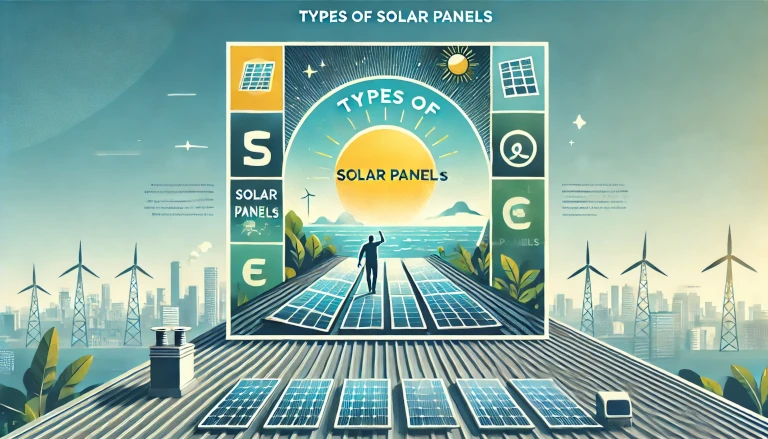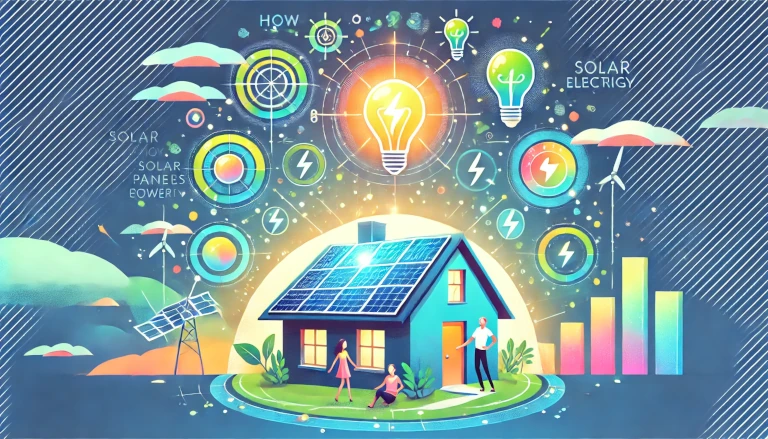Solar energy is rapidly becoming a preferred source of renewable energy for homes and businesses worldwide. However, choosing the right type of solar panel can be a daunting task. Not all solar panels are created equal, and the type you choose will depend on factors like efficiency, cost, and application. In this post, we will explore the different types of solar panels, including Monocrystalline, Polycrystalline, and Thin-Film, to help you understand their benefits and drawbacks with real-life examples.
1. Monocrystalline Solar Panels
Monocrystalline solar panels are known for their high efficiency and sleek appearance. They are made from single-crystal silicon, which allows electrons to flow more freely, resulting in higher energy conversion rates. These panels are easily recognizable due to their dark black color and rounded edges.
- Efficiency: Monocrystalline panels are the most efficient, often reaching 20-22% efficiency. This makes them ideal for homes with limited roof space, as fewer panels are required to generate the same amount of electricity as other types.
- Cost: While they are highly efficient, monocrystalline panels are also the most expensive option.
Example: A homeowner in a small house with limited roof space might opt for monocrystalline panels to maximize energy output from a smaller area. For instance, homes in California’s sunny climate can benefit significantly from this type of panel due to its high efficiency.
2. Polycrystalline Solar Panels
Polycrystalline solar panels are made from multiple silicon crystals, which makes them less efficient than monocrystalline panels but more affordable. These panels have a blue hue and are generally more budget-friendly, making them a popular choice for homeowners looking to install solar on a tight budget.
- Efficiency: Polycrystalline panels are slightly less efficient, with an efficiency range of about 15-17%.
- Cost: One of the main advantages of polycrystalline panels is their lower cost, which can make solar energy more accessible.
Example: A family looking to install solar panels on a larger property might choose polycrystalline panels, balancing the cost savings with slightly lower efficiency, especially in areas with ample sunlight like Arizona.
3. Thin-Film Solar Panels
Thin-film solar panels are made by layering photovoltaic material onto a surface such as glass, metal, or plastic. These panels are lightweight and flexible, making them ideal for unconventional applications like buildings with non-standard roofs or portable solar installations.
- Efficiency: Thin-film panels typically have lower efficiency, around 10-12%, making them less ideal for areas with limited space.
- Cost: These panels are generally cheaper to produce, but their lower efficiency means more panels are needed to generate the same amount of energy.
- Flexibility: Thin-film panels are often used for large-scale commercial projects, solar farms, or even on RVs and boats due to their portability.
Example: A business with a large flat roof in New Mexico might use thin-film solar panels for a cost-effective solution to power their operations. The lightweight and flexible design make installation easier on expansive roofs where the weight of traditional panels could be an issue.
4. Bifacial Solar Panels
Bifacial solar panels are a relatively newer technology that captures sunlight from both sides of the panel, increasing overall efficiency. These panels are designed to absorb sunlight not only from the front but also from the back, where light is reflected off the ground.
- Efficiency: Bifacial panels can achieve higher efficiency rates due to their ability to capture light from multiple angles.
- Applications: They are ideal for areas with high reflectivity, such as snow-covered regions or places with reflective surfaces like concrete.
Example: Bifacial panels might be installed in a solar farm in Alaska, where snow reflects sunlight onto the backside of the panels, boosting energy production even during the winter months.
5. PERC Solar Panels
PERC (Passivated Emitter and Rear Cell) panels are a type of monocrystalline panel that includes an additional layer on the backside, improving efficiency by reflecting light back into the panel. This technology allows the panel to capture more energy from the same amount of sunlight, making it one of the most efficient types available.
- Efficiency: PERC panels offer even higher efficiency than standard monocrystalline panels, often exceeding 22%.
- Cost: While slightly more expensive, PERC technology can generate more electricity, making it a great long-term investment.
Example: A commercial building in a city like Los Angeles might use PERC panels to maximize energy output in a limited roof space, reducing electricity bills and contributing to a more sustainable operation.
Conclusion
Choosing the right type of solar panel depends on your specific needs, including roof space, budget, and energy goals. Monocrystalline panels are ideal for those looking for high efficiency, while polycrystalline panels offer a more affordable option. Thin-film panels are excellent for non-standard installations, and the bifacial and PERC panels provide innovative ways to capture more energy in various environments.
By understanding the different types of solar panels, you can make an informed decision that suits your energy needs and contributes to a more sustainable future.
Discover more from Green Ecosystem - Renewable Energy, Agriculture, and Environmental Sustainability
Subscribe to get the latest posts sent to your email.


